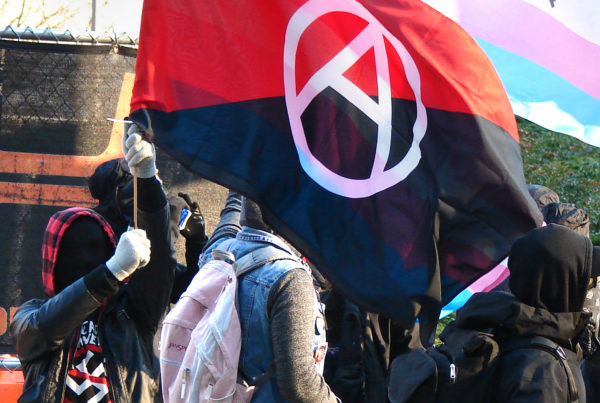Alternative Names:
Al-Aqsa Intifada Martyrs’ Group, Al-Aqsa Brigades, Martyrs of al-Aqsa group, Al-Aqsa Martyrs Battalion, Armed Militias of the Al-Aqsa Martyr Battalions.
Location:
AAMB is primarily located in the West Bank and Gaza Strip. The group also has members in Palestinian refugee camps in Lebanon.
Leadership:
AAMB acts has decentralized autonomous cells with a common ideological loyalty to the Palestinian Authority (PA) President Yassir Arafat until his death in 2004. Due to this, intelligence about leadership has been difficult to acquire. There is no unifying leadership which has made identification of senior individuals difficult, many AAMB cells suspended activity under the unilateral Palestinian cease-fire agreement. Others did not, this has highlighted the lack of central leadership or control over the autonomous cells.
Membership:
The group’s membership consists of localized, autonomous cells of Palestinian militants loyal to the Fatah movement. Due to the decentralized nature of this group, it is unknown how many members or cells exist.
Estimates have been made that the group has a few hundred members, but this is unsubstantiated.
Funding Sources:
In a similar fashion to its membership, since the group is decentralized, there funding is relatively ambiguous. Analysts believe that funding is mostly delivered from Iran through Hezbollah facilitators.
Iran is thought to explot AAMB’s lack of resources and decentralized leadership structure to ‘guide’ the organization. The belief is that this guidance is provided in support to various Al-Aqsa cells anti-Israeli agenda.
Origins:
AAMB emerged during the 2000 Palestinian Al-Aqsa Intifada, where the group split from the Fatah party to attack Israeli targets with the aim of forcing Israel from the West Bank and Gaza Strip.
AAMB’s name is in reference to the Al-Aqsa Mosque located atop the contested Jerusalem holy site known as Noble Sanctuary or Temple Mount. The individual militias themselves are named often for recently killed Palestinian militants.
Major Attacks:
January 2002: suicide attack in Jerusalem by a female terrorist. (1 killed, 40 wounded)
March 2002: sniper attack on an Israeli army checkpoint in the West Bank in which the gunman methodically targeted Israeli soldiers. (10 killed)
March 2002: suicide bombing in a Jerusalem café. (11 killed, 50 wounded)
March 2002: suicide bombing in Jerusalem. (3 killed)
April 2002: suicide bombing at a marketplace in Jerusalem. (6 killed, 104 wounded)
November 2002: shooting spree at a kibbutz in northern Israel. (5 killed, 7 wounded)
January 2003: pair of suicide bombings in downtown Tel Aviv. (23 killed, ~100 wounded)
January 2004: attack on a bus in Rehavia, Jerusalem. (11 killed)
March 2004: suicide bombing at a checkpoint at the Port of Ashdod. (10 killed)
October 2005: suicide attack at the Gush Etzion junction. (3 killed, 3 wounded)
January 2007: suicide bombing in Eilat. (3 killed)
January 2008: AAMB joined with Hamas and the Palestinian Islamic Jihad to shoot rockets into Israel from Gaza.
Ideological Roots:
This groups ideological roots are in their allegiance to the Fatah. It is important to note that this group is not an Islamist movement, there basis for action is in the creation of an independent Palestinian state.
The group acts in similar ways to Islamic fundamentalist terror groups, use of suicide bombings for example, however the group’s ideology is rooted in Palestinian nationalism and not global jihad.
Objectives:
AAMB’s goal is the creation of a Palestinian autonomous states. It carries out various types of attacks on Israeli targets in order to drive them from the West Bank and Gaza Strip and establish a Palestinian state loyal to the Fatah.
Tactics:
AAMB parimarily uses small arms attacks and explosive devices. Originally these were targeted against Israeli military personnel however in 2002 they began to increasingly target civilians in the West Bank, Gaza Strip and inside of Israel itself. The group has been known to use suicide bombers, sniper attacks on checkpoints, as well as firing rockets from Palestinian controlled territories into Israel. AAMB has claimed to have fired more than 500 rockets and missiles into Israel during Operation Pillar of Defense.
After June 2007, HAMAS’ control over Gaza Strip allowed for AAMB to intensity its rocket attacks against Israel. This was until 2009 when HAMAS increased efforts to maintain a ceasefire. Since then, the group has largely splintered with some groups becoming inactive under the ceasefire and some continuing to carry out anti-Israeli violence.
Updated on November 19, 2015







